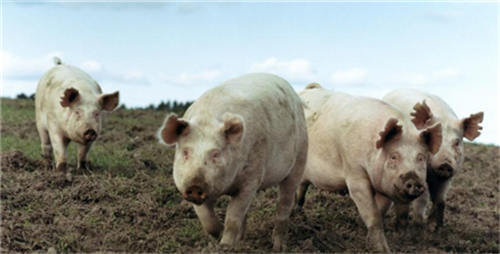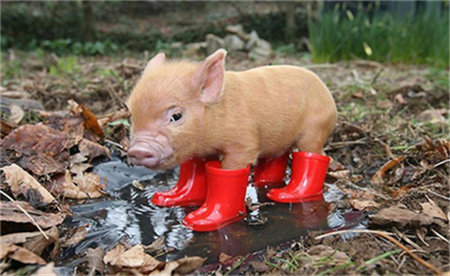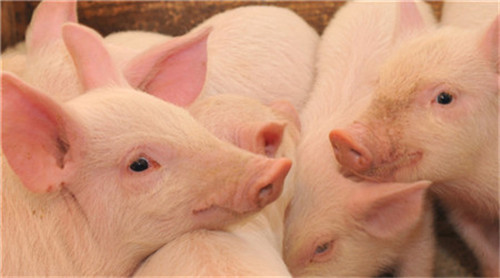Why is the incidence of porcine respiratory disease syndrome so high?
Porcine respiratory disease syndrome is a kind of respiratory disease, which is mainly caused by infectious etiology, adverse environmental conditions, drug-induced factors, health care and immune factors, such as dyspnea, skin cyanosis, accelerated breathing and other symptoms. pathological changes of pneumonia in different degrees. A variety of bacteria and viruses can cause respiratory symptoms, such as mycoplasmosis (asthma), infectious pleuropneumonia, porcine paratyphoid, reproductive and respiratory syndrome (blue ear disease), influenza, respiratory coronavirus disease and so on.
The temperature difference in spring is too large, which causes great stress to pigs. In addition, in order to keep warm, many houses close their doors and windows, resulting in an increase in the concentration of ammonia and the number of bacteria and viruses in the house, causing respiratory symptoms such as elevated body temperature, dyspnea, cough, wheezing, abdominal breathing and so on, resulting in the emergence of porcine respiratory disease syndrome, which is very harmful to pig farms. Mr. Qiao Hanjian, director of the base station of Golden Pig Mall in Jiangsu Province, based on his many years of experience in veterinary drug distribution, put forward that adding amoxicillin, doxycycline, florfenicol and antiviral drugs to feed can effectively prevent and cure respiratory diseases in pig farms.

The incidence of porcine respiratory disease syndrome is high, mostly mixed infection!
It is understood that pig respiratory diseases have become a major problem in intensive pig farms, with a general incidence of 30% to 80%, a fatality rate of 5% to 30%, or even higher, resulting in slow or stagnant growth of pigs and a reduction in feed rewards. the time to market is prolonged, the production performance is decreased, the elimination rate is increased, and a large number of pigs die in severe cases.
The reporter found that in 2007, Zhang Sihua and others conducted a seroepidemiological investigation on 420 sera from 20 large-scale pig farms and found that porcine respiratory disease syndrome infection was widespread, but the infection status was different among farms and pig herds. The main pathogens were blue ear disease virus (33.1%), circovirus type 2 (90.5%), mycoplasma hyopneumoniae (34.8%) and actinobacillus pleuropneumoniae (72.7%). In 2010, Liu Cuiquan and others reported that simple infection accounted for 28.11%, mixed infection accounted for 43.77%, and double, triple and quadruple mixed infection accounted for 28.11%, 12.46% and 3.20%, respectively. Among them, blue ear disease + circovirus type 2 (+ other) mixed infection was more common, accounting for 52.03% of all mixed infection samples.
Respiratory diseases of pigs-- "maintenance is more important than prevention, prevention is more important than cure"
The causes of respiratory diseases in pigs are complex, which can be caused by single factors such as infectious etiology, adverse environmental conditions, drug-induced factors, health care and immune factors, or by mixed factors, which make pig farm owners struggle to cope with. Mr. Qiao Hanjian told reporters that when respiratory diseases occur in a large area, treatment can no longer play a significant role, and we can only watch the losses of pig farms, so respiratory diseases in pig farms should also be dominated by prevention, supplemented by treatment, and combined with maintenance and prevention.
"in the seasons with high incidence of respiratory diseases such as changing seasons and large temperature differences between day and night, adding amoxicillin, doxycycline, florfenicol and antiviral drugs to each ton of feed can effectively prevent the occurrence of respiratory disease syndrome in pig farms." Mr. Qiao Hanjian mentioned that at the same time, we should also do a good job in daily management from the following three aspects in order to improve the immunity of pigs and achieve the combination of breeding and prevention: first, strengthen feeding management. Ensure that each pig house is kept clean and clean, strengthen winter heat preservation and summer cooling, if the virus is found, give timely isolation and treatment, for seriously ill pigs, it should be eliminated in time. Second, strengthen the disinfection work. Formulate reasonable sanitary disinfection and disinfect pig houses regularly. Third, rational allocation of diets. According to the nutritional needs of pigs in different periods, to ensure that pigs are in a balanced and reasonable nutrition level, so as to significantly improve the disease resistance of pigs.
Related
- On the eggshell is a badge full of pride. British Poultry Egg Market and Consumer observation
- British study: 72% of Britons are willing to buy native eggs raised by insects
- Guidelines for friendly egg production revised the increase of space in chicken sheds can not be forced to change feathers and lay eggs.
- Risk of delay in customs clearance Australia suspends lobster exports to China
- Pig semen-the Vector of virus Transmission (4)
- Pig semen-the Vector of virus Transmission (3)
- Five common causes of difficult control of classical swine fever in clinic and their countermeasures
- Foot-and-mouth disease is the most effective way to prevent it!
- PED is the number one killer of piglets and has to be guarded against in autumn and winter.
- What is "yellow fat pig"? Have you ever heard the pig collector talk about "yellow fat pig"?



